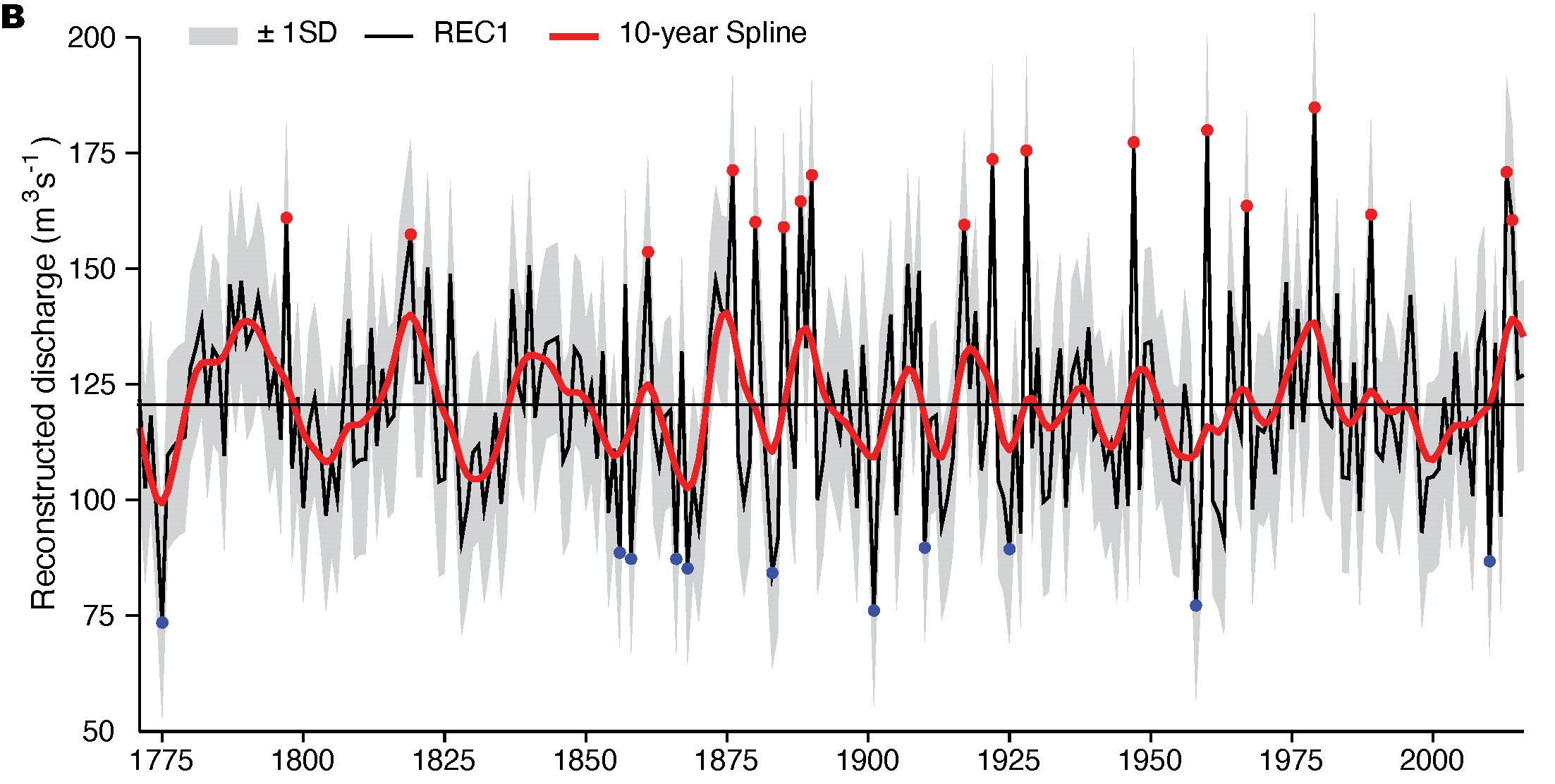Multicentury Reconstruction of Streamflow for the Abitibi River Basin and Estimation of Future Climate Changes
This project will provide hydropower producers with the robust scientific analyses to guide decision making in regards to climate change adaptations. The results will help determine whether the significance of recently observed floods is part of natural variability or if it is attributable to climate change, in which case, it may be relevant to adjust design criteria and management strategies accordingly.
Project details
Responsable scientifique

Context
To better assess the potential impacts of climate change, it is important to understand how climate-related factors affect the hydrological system. Rising temperatures and projected changes in precipitation patterns (droughts and floods) could have a major impact on hydroelectric production in the Abitibi River basin.
One of the main obstacles to flood risk analysis is the lack of spatially well-distributed, multi-year instrument-based surveys. In northern regions, hydrological and meteorological measuring stations are few and far between, and most have been in operation for less than sixty years.
The resulting time series are therefore relatively short, making it difficult to accurately assess the risks associated with exceptionally rare, intense floods. Given these limitations, the development of paleodata is a promising avenue for assessing natural variability, extreme events and long-term changes in the climate and in hydrological systems.
This project draws on recent advances in dendrohydrology and dendroclimatology to reconstruct the Abitibi River’s flood flow series, going back further than instrumental records.
Photo : UWDEL 2017
Objective(s)
-
To produce a 200-year reconstruction of flow rates in the Abitibi River basin using dendrochronological data
-
To evaluate the possibility of identifying dry periods in the pre-instrumental period
-
To understand the influence of atmospheric mechanisms on annual flow variability
-
To evaluate the influence of climate change on future hydrology
-
To facilitate the integration of research results into reservoir management approaches
Methodology
-
Reconstruction of a 200-year series of the Harricana River’s spring flows based on the growth rings of black ash trees in the Lake Duparquet floodplain
-
Evaluation of the spatial consistency of the spring freshet signal
-
Estimation of the influence of dam management on growth rings
-
Reconstruction of spring temperatures
-
Estimation of observed and projected trends in the Harricana River’s spring flows
-
Comparison and evaluation of different machine learning approaches to subtract the effect of dams on observed flows
-
Hydrological modelling of the Abitibi River watershed
Results
The analysis of the anatomical signs of flooding in the growth rings of black ash trees in the Lake Duparquet floodplain has enabled us to reconstruct the spring flows of the Harricana River from 1771 to 2016 (see Figure). The project was able to establish that the flood signal measured at Lake Duparquet is consistent with flows measured in the four watersheds located further north in Quebec and Ontario. The results also confirm that the 1870s marked the end of the Little Ice Age in Quebec, and that the frequency and intensity of floods have been increasing ever since.
The analyses not only make it clear that floods leave distinctive traces in the growth rings of black ash, but that other diffuse-porous tree species also have the potential to record major floods. These results suggest the possibility of applying the methodology to other watersheds further south. However, the method cannot be used to reconstruct summer droughts.
In addition to historical reconstructions, the project focused on hydrological modelling of the watershed. Different machine learning approaches were compared in order to identify an effective method for renaturalizing flow series affected by flow control structures. Future work will aim to integrate dendrochronological reconstruction methods with hydrological modelling tools to guide climate change adaptation decisions.

Fig 1 Reconstruction of the Harricana River’s spring flow (April 15 to June 30) between 1771 and 2016 (black line). The red line traces the 10-year moving average, and the grey area represents the confidence interval for one standard deviation. The red and blue dots indicate flows more than 1.5 standard deviations from the mean (horizontal line).
Benefits for adaptation
Benefits for adaptation
By creating a series of spring flows going back more than 250 years into the past, the project opens the door to new types of analysis to complement those based on instrumental series.
By characterizing the major high water events of the last few centuries, we are able to provide dam managers with new data to better understand future climatic conditions and estimate risks.
Scientific publications
Funding




Other participants
-
RIISQ
-
Institut de recherche sur les forêts (IRF)
-
UQAT
-
Organisme de bassin versant Abitibi-Jamésie (OBVAJ)
-
Ressources naturelles Canada (RNCan)
-
Université de Sherbrooke
Related projects
500020